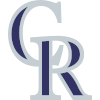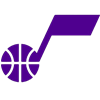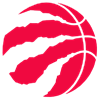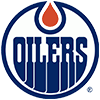I hope this installment finds you well and that you don't have too many shares of Spencer Strider, Trevor Story or Shane Bieber on multiple teams this season. The Story shoulder issue was a big hit to my teams because I bought in on the dip in many places, so come on down David Hamilton (in AL Tout) and Lenyn Sosa (in AL LABR) while Story returns to his home on the injured list for the rest of this season. Even as I compose this story, news broke that Framber Valdez, Nick Pivetta and Chase Silseth are heading to the examination table to see why their elbows are sore. The league's next rule change may need to be implementing pitching machines, as I'm not certain teams have enough pitching to make it through the season.
I don't want to spend any more time on the depressing injury news which continues to impact the game, as the new version of doomscrolling is opening up the RotoWire app on my phone on a daily basis to see which of my players will be missing time due to injury. I would prefer to focus on the results on the field, so let's take an early look to see how power and speed are going as we are now roughly 10 games into the season.
Longtime readers of this column will recall I have written an article like this right about this time in previous seasons, and I even went as far
I hope this installment finds you well and that you don't have too many shares of Spencer Strider, Trevor Story or Shane Bieber on multiple teams this season. The Story shoulder issue was a big hit to my teams because I bought in on the dip in many places, so come on down David Hamilton (in AL Tout) and Lenyn Sosa (in AL LABR) while Story returns to his home on the injured list for the rest of this season. Even as I compose this story, news broke that Framber Valdez, Nick Pivetta and Chase Silseth are heading to the examination table to see why their elbows are sore. The league's next rule change may need to be implementing pitching machines, as I'm not certain teams have enough pitching to make it through the season.
I don't want to spend any more time on the depressing injury news which continues to impact the game, as the new version of doomscrolling is opening up the RotoWire app on my phone on a daily basis to see which of my players will be missing time due to injury. I would prefer to focus on the results on the field, so let's take an early look to see how power and speed are going as we are now roughly 10 games into the season.
Longtime readers of this column will recall I have written an article like this right about this time in previous seasons, and I even went as far last year to say I thought that 2023 would be closer to 2019 than any other season in recent memory. That did not materialize, as the 5,868 homers hit last season was lower than the 5,944 hit in 2021. I can now update the table referenced in last year's piece with the final data:
Season | Early PA/HR | Final PA/HR | Delta |
|---|---|---|---|
2016 | 36.2 | 32.9 | 10.0% |
2017 | 32.5 | 30.4 | 6.9% |
2018 | 36.1 | 33.1 | 9.1% |
2019 | 29.3 | 27.5 | 6.6% |
2020 | 30.2 | 28.9 | 4.5% |
2021 | 31.6 | 30.6 | 3.3% |
2022 | 36.9 | 34.9 | 5.7% |
2023 | 32.7 | 31.4 | 4.0% |
2023 resulted in the second lowest change from early season to final season HR/PA rate on the table above trailing only the 2021 season. The average change in HR/PA rate from 2016-2023 comes out to be 6.26 percent, which is relevant when I show where we are at through games played on April 7th, 2024 in the table below:
Season | Early PA/HR | Final PA/HR | Delta |
|---|---|---|---|
2016 | 36.2 | 32.9 | 10.0% |
2017 | 32.5 | 30.4 | 6.9% |
2018 | 36.1 | 33.1 | 9.1% |
2019 | 29.3 | 27.5 | 6.6% |
2020 | 30.2 | 28.9 | 4.5% |
2021 | 31.6 | 30.6 | 3.3% |
2022 | 36.9 | 34.9 | 5.7% |
2023 | 32.7 | 31.4 | 4.0% |
2024 | 37.3 | ?? | ?? |
Needless to say, the league is off to a slow start in the home run department despite the attrition of top-end pitching talent. It bears repeating that this early-season performance has been a rather decent leading indicator to what we can expect for the rest of the season, especially in the post-Covid era where conditions and the production of baseballs appears to have been standardized as much as it can.
A full major league season has averaged 184,214 plate appearances since 2016. If we apply that average to the aforementioned 6.26 percent average change from an early season HR/PA rate to the final HR/PA rate, that calculates out to 5,269 home runs, which would be approximately 600 fewer homers than we saw just last season. That would put the league-wide run environment closer to the 2022 season, where the league finished with 5,215 homers:
Season | HR |
|---|---|
2016 | 5610 |
2017 | 6105 |
2018 | 5585 |
2019 | 6776 |
2021 | 5944 |
2022 | 5215 |
2023 | 5868 |
2024 | 292 |
We can also see this playing out by looking at home runs per contact. Using the formula ((HR/(AB-K), we can look at this rate and how it has played out over previous March/April timeframes:
Season | AB | HR | SO | HR/Contact |
|---|---|---|---|---|
2016 | 23,888 | 740 | 5,710 | 4.1% |
2017 | 25,054 | 863 | 6,047 | 4.5% |
2018 | 28,680 | 912 | 7,335 | 4.3% |
2019 | 29,500 | 1144 | 7,748 | 5.3% |
2021 | 25,221 | 875 | 6,944 | 4.8% |
2022 | 20,866 | 574 | 5,392 | 3.7% |
2023 | 28,598 | 960 | 7,403 | 4.5% |
2024 | 9,647 | 292 | 2,470 | 4.1% |
Once again, the early results are tilting toward a down year for power, as the 4.1 percent March-April HR/Contact rate is tied for the second lowest rate since 2016. Simply put, unless wind patterns change and we have 20+ MPH winds blowing out as we did here in Charlotte when the Norfolk Tides blasted the Charlotte Knights 26-11, 2024 is going to be a lower run environment unless the league compensates by running more.
I took a look last month at how the league was running in Spring Training and found the league was attempting more steals per contest than any season dating back to 2010 with 2.24 attempted steals per contest with 1017 attempted steals in 454 contests. Through games played on April 7, the league has attempted 245 stolen bases in 147 contests, which computes to a 1.67 attempted steals per contest. Cincinnati leads the league with 22 attempted steals, converting 18 of them successfully. Meanwhile, San Francisco has as many steals as Daniel Vogelbach does for his entire career: zero. The league-wide success rate has dipped to 76 percent early on, with teams successfully stealing second base 77.7 percent of the time and swiping third base 80.0 percent of the time.
The 1.67 attempted steals rate would be a decline from the 1.80 rate we saw just last season but still better than most of the rates we saw from 2013-2022. The more notable story is the 25 percent decline in frequency from the spring thus far and how pitcher and catcher batteries appear to have improved since last season in deterring the running game by lowering the league-wide success rate here in the early stage of the season. If we look at how frequently teams are attempting steals when the opportunities are there, we also see a decline:
Season | SBO | SBA | SBA% |
|---|---|---|---|
2021 | 66049 | 2924 | 4.4% |
2022 | 66366 | 3297 | 5.0% |
2023 | 67215 | 4369 | 6.5% |
2024 | 4417 | 267 | 6.0% |
Too long didn't read? Homer and steals are down and are unlikely to reach the 2023 levels, which means we should be looking to hoard power wherever we can find it and that ERAs should be better for whichever pitchers can remain healthy and upright this season.



































